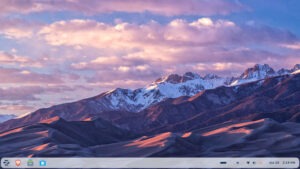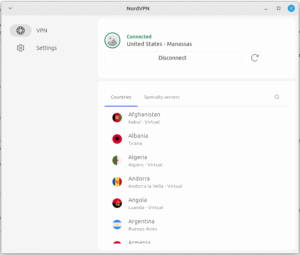Just because software is free doesn’t mean it’s free software.
This may confuse those who only know the Windows world, where the software animal known as “freeware” is readily available but truly free software is a bit more scarce. They may be excused for thinking, when we Linux users talk about “free software,” that they use free software too. After all, doesn’t a free antivirus program qualify as free software? Or what about that gee-whiz free password manager that’ll generate and store five or six passwords–more if the “pro” version is purchased?
Linux users will also be excused for rolling their eyes before answering, “Nope. Neither of those examples is what we mean by ‘free software.'”
Sure, honest-to-goodness free software is available for Windows. Many, if not most Windows users use a free browser such as Firefox and certainly free office suites such as LibreOffice have gained much traction in the Windows world. Other than that, you usually have to go looking for Windows FOSS, and most of what you’ll find was originally developed to run on Linux. For example, I have my favorite text editor, Bluefish, and my favorite accounting program, GnuCash, installed on the sole Windows machine I use.
But that same Windows machine also has some freeware, which is nonfree, proprietary software that doesn’t cost anything to use or run. Because Windows is inherently insecure I use a “free” antivirus program. Until recently, I also kept a free, but proprietary, firewall installed as well.
Freeware may not cost anything out-of-pocket, but it always comes with a price. I was rudely reminded of this the night before last when I was interrupted at my “day” job by a phone call from a friend who relies on my limited expertise to keep her Windows laptop running. It seems she had clicked through what she thought was a request by AVG to update her antivirus engine and when the update had finished, her browser searches took her to an AVG search page. She needed my help to return to Google, her search engine of choice.
This was a road I’d been down before. The distributors of freeware figure that since you’re getting their oh-so-valuable software for free, you won’t mind if they change a setting or two on your computer so they can make a buck or two on the free software you’re using. Changing your default search page so they can rake in some Google Adsense bucks is one of their favorite tricks. As is adding a toolbar that sucks up system resources while it tracks your online behavior.
Over the phone I was able to talk her through getting the AVG search page off of her home page, but when AVG search kept showing up whenever she created a new tab, I had to make a trip to look at the laptop in person.

Undoing what they’d done required a visit to the Control Panel to remove the toolbar app and then a march through Chrome’s settings to remove references pointing to AVG. This wasn’t difficult, but it was taking up time that could be better spent doing something else–especially given the fact that I’m way behind schedule here at FOSS Force.
Actually, by Windows freeware standards, AVG’s behavior wasn’t that bad, even if they did take advantage of my friends lack of knowledge to trick her into installing their spyware toolbar on her machine. There’s much worse out there. I’ve written about Zone Alarm, at one time absolutely the best software firewall for Windows, which takes over the settings on every browser on a Windows machine to redirect search results to their page with every single update–with no way to opt out of the process as far as I’ve been able to tell. This is a particular nightmare for web developers who might have five or six browsers installed on their systems.
Not all freeware acts this way. Much of the freeware available for Windows falls into the category called “crippleware.” Although these are marketed as fully functional applications, they’re actually merely samples of a commercial product with many useful if not necessary functions disabled. They’ll work fine for simple tasks, but as soon as you try to actually do some work with them, you’ll find that a needed function is only available on the “Pro” version which you are welcome to purchase–get out your credit card. This model also exists in the FOSS world, but not to the extent it does with Windows.
In the Linux world, of course, behavior such as changing your browser’s settings without your explicit permission would be considered next to criminal. If such an application was included as part of a distro’s software repository, it would be promptly removed as soon as its bad behavior was realized. Indeed, it’s doubtful that such programs would ever make it to be included in a distro’s repository, as its unwelcome properties would most likely be discovered during the vetting process.
Thankfully, most of my Windows friends who rely on my help to keep their computers healthy are running XP, which will be reaching its end-of-life soon and will no longer receive Microsoft’s so-called “security updates.” I’ve already been hinting that at that time they’ll have no excuse but to finally make the move to GNU/Linux. I have no doubt that as much as they’ve been resisting this move, when the time finally comes they’ll find themselves wondering why they waited so long. Maybe then they’ll realize what I’ve been talking about when I try to explain the difference between freeware and software that is free.
Christine Hall has been a journalist since 1971. In 2001, she began writing a weekly consumer computer column and started covering Linux and FOSS in 2002 after making the switch to GNU/Linux. Follow her on Twitter: @BrideOfLinux







Hi Christine, i’m a fan of your articles however this one hits home a little bit for me, as a web developer i use Linux, Windows, MacOS and FreeBSD and i agree freeware in windows is in fact limited in many ways,
However on my Linux servers i use AVG File Server Edition and on my windows Machine i use AVG Internet Security and i can honestly say in my experience with mine and my customers computers i have never actually had AVG wanting to install their toolbar past the initial installation screen where you can choose not to, which very often i do as i like plain old Google too much.
And i totally agree with your Zone Alarm Comment and also i found McAfee was also bad for me too but your friends experience for me is definitely a first.
Thanks for this article it was a most intriguing read.
Stay Well,
Ken
United Kingdom
You’re right Ken. As I say in the article, she clicked on what she thought was an update notice. It wasn’t until I begin looking at her computer that I realized that the update notice was really a notice to install their toolbar. The problem is, as I pointed out, this looks just like the “it’s time to update” notice. You or I would’ve noticed this for what it is and clicked “no, thank you.” But my friend, like most computer users, isn’t that savvy and just assumed that all she was doing was allowing AVG to install an update. To me, this makes this a case of social engineering not unlike email phishing attempts.
Like you, I think AVG basically puts out a good product. However, I think some of their marketing practices are ill advised–though not nearly as bad as others.
🙂
Well, I have used AVG…..Avast….Zone Alarm….Symantec….McAfee….and a few others on Windows machines and although they might perform their tasks well, I could never shake that feeling that something was left “undone” that sneaking sensation that somehow they might have “missed” something. I mean after all, I was running these “anti-something” apps way before the “nimdA”…(which is “Admin” backwards..LOL how funny!) or the My Valentine…or the I Love You outbreaks came about…and yet and still….there was always something that made it through…even without my intervention….just by visiting a site possibly…(which I would do DAILY as I worked in a warehouse, and had a PLANET-ful of vendors who would always update / upgrade their sites and links) and somehow just by visiting a site that might not have been as…how did you put it Christine?…”savvy” as most of us, I ended up literally having to replace the hard drive, the memory modules and the monitor (threw the monitor in for “personal” satisfaction when I submitted the quote! LoL!) I have been an advocate and user of GNU/Linux and FOSS for about 7 years, and I can say that even though there are ways to cripple or infect ANY PC…regardless of it’s OS, it just seems to me that because I have a lot more control when it comes to “Who-Has-Access-To-What-When-And-Where” on my systems, things seem a little less scary, I don’t worry as much when I see a Pop-Up on my desktop or laptop screen, because more likely than not? its not some antivirus application telling me that my files are outdated, its more likely that it’s the kernel, warning me that some process or file is being accessed, and if I didn’t authorize the access, then it’s going to terminate the process trying to access it. I cannot recall the last time I got a warning like that from a Windows system, mind you…you WILL get warnings from Windows…but they’ll usually be on the order of “Low System Memory”…or “Cannot access document/file. This file is corrupted” types…I don’t know if this is obvious or not, but I like to write, and using Word was a dream come true, until things went south and I would get Blue Screens Of Death almost every week, and because I wasn’t as “savvy” (I LOVE that word….very “Pirate-y”!) back in those days, more often than not I would have to do the whole document over again, try doing that while unloading trucks, AND trying to “self-educate” yourself on PC’s and technology…AND trying to get a Bachelor’s degree from DeVry University!! Needless to say, after the thousands of disappointments I’ve gotten from the World Of Windows, I now rest peacefully in a FOSS World where everyone is entitled to use what they WANT to use, and it’s no business of mine or anyone else for that matter, and where the software really IS FREE to an extent…(you DO contribute to your favorite distro…DON’T you!?..LOL) I cannot ever possibly think about re-entering the Windows realm EVER again! And before you cover me in oil and set me ablaze on the pyre for my words, just know I’m only relegating my own PERSONAL experiences with Windows and GNU/Linux…I’m not trying to put anyone down…so having said all that I will retire to the “Bat-cave” and await the onslaught of terror that is most assuredly to come!
Cheers!!
Good job Christine. Here’s another, very complementary article that tackles the same subject: http://gnuguru.wordpress.com/2010/10/02/about-free-software/
@Eddie G.
Why in the world would you have to replace the hard drive and memory modules after a Windows virus infection? And, by the way, it’s not the PC that is infected. It the OS that becomes infected with malware.
Why in the world would anybody with a brain use Windows? Oh, wait. Nobody does.
@djohnston: It was a virus that corrupted the MBR, and made it inoperable to the point where the HD was defunct….and the replacement of the memory was a “shot in the dark” in the hopes that the memory was the POF (Point-Of-Failure) And while it IS the OS that becomes infected, one well placed script can make all manner of H/W just as useless as an umbrella that won’t open…in the middle of the heaviest rain!!….anything else ya wanna know?…LOL!
@Eddie G.
For future information, the hard drive was NOT rendered inoperable because of an infected MBR. To erase the MBR, along with the infection, after booting a DOS medium, do:
fdisk /mbr
From Linux, do:
dd if=/dev/zero of=/dev/sdx bs=512 count=1
where sdx is the actual disk device. Could be sda, sdb, etc. If you’re worried about the rest of the disk drive, too, download DBAN and burn it to a CD. Boot from the CD, pick the method and the drive, then wipe the drive. It will wipe the MBR along with everything else.
Just out of curiosity, what Linux or BSD malware will render hardware inoperable? Never heard of such an animal. Doesn’t mean it doesn’t exist. Just never heard of it.
NO worries dude! Here’s a link from what I could find, apparently the whole “attack the MBR” is making a comeback of sorts?…I dunno, all I do know is that back then (’02 – ’04) I was totally lost and didn’t have a clue as to how to fix it…but thanks for the info..I’m compiling a “handbook” of sorts with all the tid-bits of info I can glean….this is going in Chapter Three! :o) (Not publishing it…so not to fret over copyrights or plagiarism!! LOL! It’s strictly for my personal reference…)
Don’t know how old this link is…but these sounded like the symptoms I had experienced “back then”!
http://www.f-secure.com/v-descs/boovirus.shtml
I never understood viruses that trash a computer’s ability to function. Surely that is self defeating?
Out of hundreds of free programs for Windows you’ve managed to highlight the most obnoxious and in the most useless category of antivirus/firewall crapware. Go to portableapps.com/apps or winPenPack.com and browse categories. It’s a good compilation of programs that are really free and well vetted.
This is just one of many reasons why I use GNU/Linux and BSD systems. When Ubuntu tried their “send your info by default to ‘the cloud'” business, there was major protest. Canonical backed off, changing it from “opt-out” to “opt-in”. If you don’t like Ubuntu, there’s gNewSense or other Debian derivatives, including Debian itself. There’s Mageia, CentOS, Slackware, even Gentoo for the harder-core folks. On the BSD side, you’ve got your choice of FreeBSD, NetBSD, OpenBSD, and their derivatives (e. g. PC-BSD). Theo de Raadt may be “difficult”, as Linus has said (yeah, I know, so’s Linus), but he’s committed to transparency and openness.
We get spied on enough (and that needs to change, BTW). We don’t need our operating systems or applications doing it, too. Long live Free Software.
–SYG
SYG
Of all the distros you listed, only gnewsense is really “free”.
The rest ship with assorted bits of proprietary code, which may or may not contain backdoors or other nefarious routines.
I can’t speak for the BSD’s as I know nothing about them but for free distros read – Trisquel, Parabola, gnewsense, Ututo, Musix and Blag.
There is “free” as in zero price tag and “free” as in fully open – every single line of code is viewable and editable. Most distros are free as in price tag but not free as in fully open (even if they are 99% open, the 1% is enough to compromise the User).
Does it matter that most ship with proprietary code? In light of recent revelations I would suggest that it matters very much indeed.
Points well made, Christine. I still hear Windows (and Apple) users refer to free software as freeware. It’s unfortunate because freeware is such a swamp inhabited by creepy things that free software gets tarred with a filthy brush. It’s cheap, shoddy and infected, isn’t it?
Another nice post.
rjb
@Ken: I have more than once (in the past) seen AVG to hide the opportunity to not install the toolbar and to not change your search page deep within the install process. On a screen in the middle of it, and having to uncheck first a “standard install” box, and only then to get to a screen where you can uncheck the boxes for toolbar and search page.
@ Grigor: I find that this is almost a “common” practice in the world of Windows / Apple “free” apps. There’s always something “extra’ that they want to install on your PC, and its always something that doesn’t come with the free version…but for a small price you can have the “full” version of whatever it is….yet another reason I’ve left both those OS’es behind!